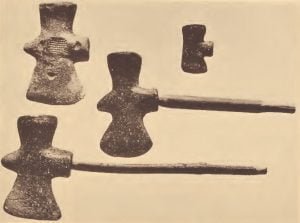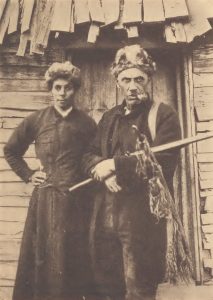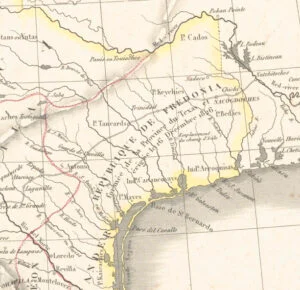Powhatan Pottery
First let us look over the material from the Virginia tidewater area. Everywhere here from the southern boundary of Virginia by actual observation, north-ward even through the Delaware valley, the pot-sherds are almost identical in material, decoration and color. Holmes has appropriately called the ceramics of the tidewater “the Algonquian type.” On the Pamunkey, Mattaponi, Rappahannock, James, and Chickahominy rivers it is all the same, the rims, decorations, and ingredients being practically uniform within a certain range of variation.



